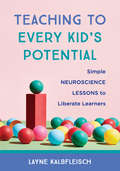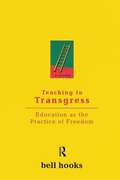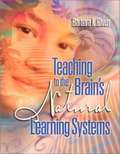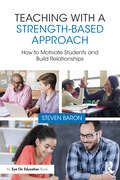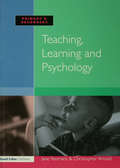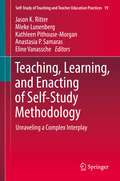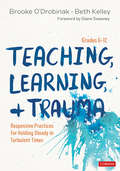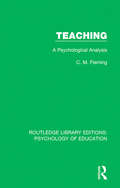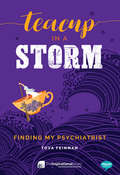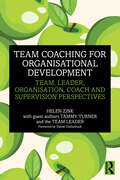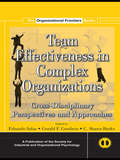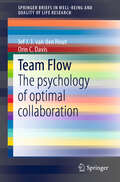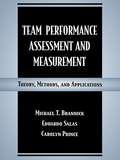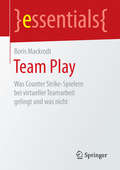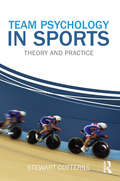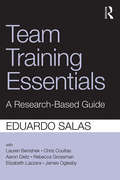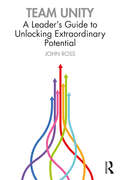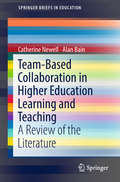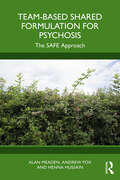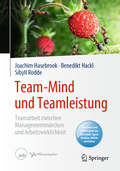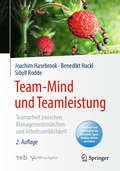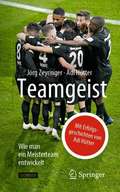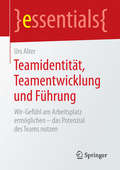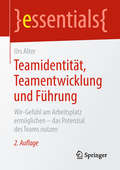- Table View
- List View
Teaching to Every Kid's Potential: Simple Neuroscience Lessons To Liberate Learners
by Layne Kalbfleisch MED, PhD“Teachers hold the potential to provide a student with frustration or opportunity every day—and those states are closer together than you might think.” When students repeatedly lose track of directions or take a long time to solve problems, it’s easy for teachers to see the distracted or off-task behavior, but not always to see the root of the problem. Quite often the same child who has an underdeveloped skill may have an opposing but hidden strength: a slow processor of information may also be a deep thinker. Teaching to Every Kid’s Potential is an invitation to teachers to improve the learning in their classrooms, one student at a time, using practical, evidence-based strategies. Focusing on four big concepts from neuroscience—flexibility, readiness, connection, and masking—the author shows how to apply them to build on the strengths of students. Each chapter unpacks the science; shows how talents can compensate for neural processing issues and suggests small but powerful adjustments to classroom practice that can allow kids’ gifts to emerge.
Teaching to Transgress: Education as the Practice of Freedom
by Bell HooksWidely admired as a leading black intellectual, hooks is also an inspired teacher. Here, she offers her ideas about teaching that fundamentally rethink democratic participation. These essays face squarely the problems of today's classrooms, including racism and sexism. Ms. hooks sees the gift of freedom--the freedom to think critically--as a teacher's most important goal.
Teaching to the Brain's Natural Learning Systems
by Barbara K. GivenJust as educators divide many subjects into parts, goals, and learning objectives, we can begin to understand the workings of the human brain by focusing on five learning systems: emotional, social, cognitive, physical, and reflective. In Teaching to the Brain's Natural Learning Systems, Barbara K.Given has investigated brain structures and functions of these five systems and applied findings from neurobiology to education without making leaps of judgment or unfounded claims. In this book, she translates neuroscience into an educational framework for lesson planning, teaching, and assessment. Educators can use details from each chapter to add to their repertoire of teaching strategies and instructional approaches. For example, understanding the five learning systems promotes effective, ongoing assessment of youngsters' basic human needs to belong, to know, to do, to reflect, and to be one's self. In addition, each chapter can help teachers' understand the roles they play (mentor/model, collaborator, facilitator, coach, and talent scout) and the personal/professional qualities they bring to the classroom (passion, vision, intention, action, and reflection). This is a practical book for educators based on current neurobiological insights into learning.
Teaching with a Strength-Based Approach: How to Motivate Students and Build Relationships
by Steven BaronHelping students improve doesn't have to mean remediating their deficits. In this important book, Steven Baron shows the benefits of a strength-based approach that instead emphasizes students' assets and capabilities, making them feel more connected to teachers and peers and more engaged in learning. You’ll learn practical, research-backed ways to help students of all grade levels identify and celebrate their strengths, develop self-confidence and a growth mindset, build intrinsic motivation, overcome a fear of making mistakes, manage their feelings, focus on gratitude, and more. You’ll also discover ways to create a more strength-based Individual Education Plan (IEP), increase your own resilience as a teacher, and build a strength-based culture throughout your school and district. The appendix provides a variety of exercises you can use to help students focus on their strengths, foster kindness, and understand the impact of bullying. Students spend approximately 1300 hours during the year with teachers; this resource will help you make this time as affirming as possible so students are ready to learn and grow.
Teaching, Learning and Psychology
by Jane Yeomans Christopher ArnoldPresenting a range of psychological theories in a non-technical and readable style, this book shows how psychology can be used to effectively deliver educational objectives and enhance children’s learning. Linking theory with practical application, the authors consider the wider role that schools can play in the social development of children through: teaching and managing individual pupils teaching and managing groups of pupils the teacher as part of an organisation and school system the teacher as part of the community of the school and area. Structured to reflect the standards for QTS and relevant for key stages 1-4, this book shows how understanding the psychological theories underpinning pedagogy can help both trainee and practising teachers become reflective and informed practitioners when faced with new and challenging teaching situations.
Teaching, Learning, and Enacting of Self-Study Methodology: Unraveling A Complex Interplay (Self-study Of Teaching And Teacher Education Practices Ser. #19)
by Anastasia P. Samaras Jason K. Ritter Mieke Lunenberg Kathleen Pithouse-Morgan Eline VanasscheThis book offers a collection of original, peer-reviewed studies by scholars working to develop a knowledge base of teaching and facilitating self-study research methodology. Further, it details and interconnects perspectives and experiences of new self-study researchers and their facilitators, in self-study communities in different countries and across different continents. Offering a broad range of perspectives and contexts, it opens up possibilities for encouraging the collaborative and continuous growth of teaching and facilitating self-study research within and beyond the field of teacher education. The breadth of the scholarship presented expands scholarly discussions concerning designing, representing, and theorising self-study research in response to pressing educational and social questions. By documenting and understanding what teaching and learning self-study looks like in different contexts and what factors might influence its enactment, the book contributes to building a kaleidoscopic knowledge base of self-study research. Overall, this book demonstrates the impact on participants' professional learning and validates the authenticity and generative professional applications of self-study methodology for and beyond teacher education, providing implications and recommendations for practitioners on a global level.
Teaching, Learning, and Trauma, Grades 6-12: Responsive Practices for Holding Steady in Turbulent Times
by Brooke O’Drobinak Beth KelleyTransform challenging classroom experiences into opportunities for lasting student-teacher relationships, professional growth, and student engagement Chronic stress, anxiety, and trauma have startling effects on teachers and students. The pandemic and distance learning have exacerbated behavior issues and emotional dysregulation, making it difficult for students to engage, learn, and maintain healthy self-esteem. In Teaching, Learning, and Trauma, the authors guide you through the process of creating a learning environment that combats the negative effects of chronic stress and trauma. They show you how to establish rituals and routines, develop personalization, and implement effective student engagement practices that create a relationship-based culture and effectively improve student achievement. This book includes: Self-assessment tools to help teachers make informed decisions Examples of self-care plans and schoolwide policies for maintaining healthy boundaries in and out of school Real-world vignettes and samples of teacher work Planning documents and reflection questions to guide educators in identifying strengths and growth areas Using a synergistic approach, this book unites compelling research data, theories, stories, and best practices from trauma-informed schools, relationship-based psychology, and effective instructional design to dissolve obstacles caused by chronic stress and trauma.
Teaching, Learning, and Trauma, Grades 6-12: Responsive Practices for Holding Steady in Turbulent Times
by Brooke O’Drobinak Beth KelleyTransform challenging classroom experiences into opportunities for lasting student-teacher relationships, professional growth, and student engagement Chronic stress, anxiety, and trauma have startling effects on teachers and students. The pandemic and distance learning have exacerbated behavior issues and emotional dysregulation, making it difficult for students to engage, learn, and maintain healthy self-esteem. In Teaching, Learning, and Trauma, the authors guide you through the process of creating a learning environment that combats the negative effects of chronic stress and trauma. They show you how to establish rituals and routines, develop personalization, and implement effective student engagement practices that create a relationship-based culture and effectively improve student achievement. This book includes: Self-assessment tools to help teachers make informed decisions Examples of self-care plans and schoolwide policies for maintaining healthy boundaries in and out of school Real-world vignettes and samples of teacher work Planning documents and reflection questions to guide educators in identifying strengths and growth areas Using a synergistic approach, this book unites compelling research data, theories, stories, and best practices from trauma-informed schools, relationship-based psychology, and effective instructional design to dissolve obstacles caused by chronic stress and trauma.
Teaching: A Psychological Analysis (Routledge Library Editions: Psychology of Education)
by C.M. FlemingOriginally published in 1968, the findings of modern psychological research had contributed much that was directly relevant to the problems of all who taught at the time. Dr Fleming here presents both recent and past conclusions in a survey that would have been useful to all who were called upon to give instruction. Since its first appearance in 1958 this book had been entirely revised and brought into line with the most modern research. Today it can be read and enjoyed in its historical context.
Teacup in a Storm: Finding My Psychiatrist (Inspirational Series)
by Tova FeinmanA bright and brilliant academic, Tova Feinman had an enviable life. She had a job through which her intellect shone, a loving husband, and a child who adored her. But sometimes, people’s lives are far different than they appear on the outside. Wracked with trauma from childhood abuse, and dealing with her husband’s addiction to pills, Tova sought therapy to soothe her mind.But therapy is not as easy as simply finding a person to talk to. Forging such an intimate – while at the same time appropriate – bond with someone can be a difficult thing to do. Tova built a dangerous relationship with her first therapist, during which she teetered on the edge of oblivion. It was only when this came to an abrupt end that she found her current therapist Dr. Guterson and began to mend herself. Twenty years on, Tova and Dr. Guterson’s relationship remains professional, their bond strong and dependable. Teacup in a Storm tells the journey of a woman looking for the right therapist, and the pitfalls she encountered along the way.
Team Coaching for Organisational Development: Team, Leader, Organisation, Coach and Supervision Perspectives
by Helen ZinkWorking with teams, leading teams and being a member of a team is part of everyday working life for most of us. Through the lens of a team coaching case study, this book considers the development journey of a team and system influences over a three-year period. Readers are invited to walk in the shoes of the team, the team leader, the organisation, the team coach and the coach’s supervision and support networks, providing a unique insight into team coaching and development that goes beyond the traditional focus on the coach’s perspective. Helen Zink uses her considerable experience as a leadership and team growth coach, and leader to illustrate how team coaching interventions can be combined with other disciplines such as positive psychology, change management and strategic implementation in effective ways. The book takes a pracademic approach, showing how theories, models and best practice are applied to a real case and highlighting both the successes and challenges experienced to offer an example for all those involved in team, leadership and organisational development. With it widely recognised that collective leadership and teamwork is needed to deal with the rapidly changing environment organisations find themselves in, this is a timely and important resource for coaches, team coaches, coach supervisors, team leaders, team members, organisational development specialists, change managers, academics and consultants.
Team Effectiveness In Complex Organizations: Cross-Disciplinary Perspectives and Approaches (SIOP Organizational Frontiers Series)
by Eduardo Salas C. Shawn Burke Gerald F. GoodwinOver the past 40 years, there has been a growing trend toward the utilization of teams for accomplishing work in organizations. Project teams, self-managed work teams and top management teams, among others have become a regular element in the corporation or military. This volume is intended to provide an overview of the current state of the art research on team effectiveness.
Team Flow: The psychology of optimal collaboration (SpringerBriefs in Well-Being and Quality of Life Research)
by Jef J.J. van den Hout Orin C. DavisThis book presents a series of studies that conceptualize, test, and monitor team flow experiences in professional organizations to perform autonomously and successfully. It analyses the processes by which team flow emerges by exemplifying case studies, and introduces a protocol to spark team flow in professional organizations.
Team Performance Assessment and Measurement: Theory, Methods, and Applications (Applied Psychology Series)
by Eduardo Salas Michael T. Brannick Carolyn PrinceThis book began at a conference on team performance measurement held at the University of South Florida. Several participants at the conference felt that a book on team performance measurement would be of interest to a broader audience, and they began looking for authors in diverse disciplines. Some of the chapters in this book closely follow material presented at the conference. Many others report work that was done subsequently or was done by authors not present at the conference. The result is a book rich in its diversity of approaches to measurement and which contains illustrations of many different teams. This book is the first of its kind to bring together a collection of scholars and practitioners focusing solely on the problem of team performance measurement. Although much has been written about team and group effectiveness, little theoretical and empirical progress has been made in the measurement of team processes and outcomes. The book represents a major step forward both theoretically and empirically. Section 1 provides a rich theoretical basis for measurement, including designing measures to be used in team training, measures of shared mental models, and measures of team workload. Section 2 addresses methodological developments and issues, including the design and validation of simulations, surveys, and observer checklists. It also deals with issues such as the consistency of team performance and task and level of analysis issues. Section 3 provides applications and illustrations of team performance measures in such teams as nuclear power control room operators, theater technical crews, and aircraft cockpit crews. Section 4 offers guidance for anyone interested in developing their own measures of team performance. There are both theoretical and practical reasons for the current interest in teams. Psychological research interest in groups and teams has returned and is now a thriving area. Self-managed work groups and semi-autonomous work groups have become increasingly common in industry, so there is an increased interest in team functioning from a practical standpoint. This volume's purpose is to describe recent advances in the measurement of team performance, both process and outcome. Several of the chapters provide recommendations on how, when, and why to measure aspects of teams. In addition to describing what is currently known, the book also discusses what remains to be known and what needs to be done next. The book is intended primarily for those interested in research about team processes and outcomes--researchers and academics who possess a basic understanding of statistics and psychometrics. The bulk of research reported has applied aims which provide much practical information, such as how to design simulations, rating forms, and dimensions of team performance useful for feedback to many kinds of teams. In addition, there are examples from several different kinds of teams, including aircrews, nuclear power plant operators, hospital workers, ship combat information center groups, and theater technicians. Therefore the book should be useful to people who want to design measures to evaluate teams.
Team Play: Was Counter Strike-Spielern bei virtueller Teamarbeit gelingt und was nicht (essentials)
by Boris MackrodtDer Autor stellt in diesem essential f#65533;r das als klassisch geltende Team-Computerspiel Counter Strike dar, welches die Grundlagen und Bedingungen einer erfolgreichen Online-Kooperation sind und inwieweit unter dem Stichwort Gamification ein #65533;bertrag in die Arbeitswelt gelingen kann. Denn in jeder Sekunde kooperieren weltweit Millionen von Menschen online und bilden neue Gesellungsformen, um ein gemeinsames Spielziel zu erreichen. Online-Computerspiele k#65533;nnen aus dieser Sicht als Benchmark f#65533;r gelungene virtuelle Kooperation gesehen werden.
Team Psychology in Sports: Theory and Practice
by Stewart CotterillThe ability to mould a group of talented individual athletes into an effective team takes effort and skill. Team Psychology in Sports examines the crucial factors in the development of an effective team, introducing important psychological and organizational concepts and offering evidence-based interventions for enhancing the performance of any sports team. The book neatly bridges the gap between theory and practice, with real sporting case studies, examples and practical tools included in each chapter. It covers the full range of issues in team sport, including: planning communication cohesion motivation emotions momentum leadership recovery. No other book offers such an up-to-date, relevant and applied guide to working with sports teams. It is essential reading for all students and practitioners working in sport psychology or sports coaching.
Team Training Essentials: A Research-Based Guide
by Eduardo SalasTeam Training Essentials succinctly outlines best practices for team training, as based in the latest organizational psychology research. Organized into 5 ‘pillars,’ this clear, accessible guide covers all aspects of team training, from design and delivery to evaluation, transfer, and sustainment methods. Useful for anyone studying team dynamics and performance as well as group training, this book will also be of interest to professionals looking to apply team training practices in real business settings.
Team Unity: A Leader's Guide to Unlocking Extraordinary Potential
by John RossBased on more than ten years of researching, observing, coaching, and building extraordinary teams, this entertaining and thought-provoking book demonstrates how to unify groups of all sizes to maximize performance. Unity is the most influential factor in team performance and, although it is frequently discussed, it is often misunderstood. This book explains how disunity is the root cause of all team dysfunctions, and provides clear instructions on how to define, measure, and increase unity in your organization. Through entertaining and impactful stories, John Ross divides Team Unity into four components - focus, direction, trust, and conflict – and examines how they are related and measured. Notably, Ross introduces The Unity Formula: a simple equation useful for leaders at all levels in any organization to measure the team’s current unity and identify areas for improvement. Senior and middle managers in manufacturing, hospitality, and a range of other industries, as well as entry level employees and students of organizational behavior and HRM, will find this book an invaluable resource for understanding how to identify, measure and partake in the right steps to increase team performance.
Team-Based Collaboration in Higher Education Learning and Teaching: A Review Of The Literature (SpringerBriefs in Education)
by Alan Bain Catherine NewellThis book examines what collaboration means in practice, and the factors that enable effective team collaboration for learning and teaching in higher education. It explains how academics can work more collaboratively, and how universities can organise and govern themselves by means of collaboration. The book brings together current research and commentaries on collaboration in higher education to provide important guidance derived from a synthesis and evaluation of the existing empirical research and commentaries in the field.The book will benefit all readers who are interested in making their own teams and higher education organisations more collaborative. It will help them plan collaborative innovations in their organisations, identify priorities for professional capacity building, and design collaborative organisational structures.
Team-Based Shared Formulation for Psychosis: The SAFE Approach
by Andrew Fox Alan Meaden Henna HussainAdding to the growing literature on shared formulation, the authors provide over two decades of practice-based evidence for the use of a Shared Assessment, Formulation and Education (SAFE) approach to working with those with complex mental health and behavioural needs. The SAFE approach offers an evidence-informed framework for multidisciplinary teams to address the needs of those with complex and enduring psychosis for whom current evidence-based interventions are ineffective in promoting their recovery. Drawing from richly detailed case studies, the authors provide a range of useful tools and fomulation templates for use by clinicans and professionals alike. They put forward a shared language to promote a multidisciplinary understanding of service users' complex needs and a means of organising treatment into a focused, realistic and targeted approach aimed at reducing barriers to recovery and allowing individuals to lead personally meaningful lives. The book focuses predominantly on the treatment of those with psychosis who require bespoke, multi-theory informed care. This work will be an invaluable resource to professionals working with this client group, including clinical and counselling psychologists, psychiatrists and other allied health professionals.
Team-Mind und Teamleistung: Teamarbeit zwischen Managementmärchen und Arbeitswirklichkeit
by Joachim Hasebrook Benedikt Hackl Sibyll RoddeWie können Teams den Erfolg von Organisationen steigern?Wann schaffen Mitarbeiter in Teams wirklich mehr als alleine? Entscheiden Teams ausgewogener als Einzelne?Führt eine gute Teamatmosphäre wirklich zu mehr Leistung?Können Roboter und Künstliche Intelligenz zu Teamkollegen werden?Aus der Wissenschaft für die Praxis gibt dieses inhaltlich breit aufgestellte Buch fundierte, richtungsweisende und praxisnahe Antworten auf Fragen zum Thema „Team“. Basierend auf aktuellen Erkenntnissen der Sozial-, Arbeits- und Neuropsychologie zeigen die Autoren an vielen praxisrelevanten Beispielen und anhand von Interviews mit erfahrenen Managern aus Spitzensport, Wirtschaft, Militär und Wissenschaft, wie Teamführung in Organisationen sinnvoll umgesetzt wird und Teams erfolgreich agieren können.Erfahren Sie, wie auch Sie in Ihrer Organisation oder in Ihrem Team die gesamte Teamleistung dauerhaft steigern können.Zielgruppen:Alle, die selbst in Teams arbeiten, z. B. Teamleiter in Dienstleistung, Verwaltung oder IndustrieMitarbeiter in teamorientierten Organisationen Vorstände und AufsichtsräteManager und TeamverantwortlicheAlle, die Voraussetzungen für Teamarbeit verbessern wollen, z. B. Strategie- und ManagementberaterIngenieure für im Team verwendete MaschinenArchitekten von ArbeitsräumenDesigner von ArbeitsumgebungenForscher an Hochschulen und in Unternehmen
Team-Mind und Teamleistung: Teamarbeit zwischen Managementmärchen und Arbeitswirklichkeit
by Joachim Hasebrook Benedikt Hackl Sibyll RoddeWie erfolgreich eine Organisation ist, wird dadurch bestimmt, wie gut die Mitarbeitenden in ihr zusammenarbeiten. Krisenzeiten machen das besonders deutlich und stellen zugleich besondere Anforderungen an die Zusammenarbeit: Krisenstäbe werden gebildet, Teammitglieder arbeiten plötzlich getrennt und virtuell, Unsicherheit durch psychische Belastungen und Cyberattacken wächst. Jenseits von Binsenwahrheiten und simplen Erfolgsrezepten gibt dieses Managementbuch psychologisch und betriebswirtschaftlich fundiert Antworten, wie erfolgreiche Teamarbeit auch in Krisenzeiten funktioniert. Sie erfahren, wie Sie Teamleistungen fördern und was Sie von Hochleistungsteams lernen können. Mit zahlreichen Beispielen aus der Praxis und in Interviews führender Expertinnen und Experten aus Industrie, Wissenschaft, Medizin, Militär und Spitzensport wird leicht verständlich und unterhaltsam erläutert, wie man Trendsetter für bessere Teamleistung wird. Das Buch ist von einem Organisationspsychologen, einem Betriebswirt und einer klinischen Psychologin verfasst und daher interdisziplinär und breit anwendbar angelegt. Es beruht auf über 15 Jahren Praxis- und Forschungserfahrung sowie topaktuellen Erkenntnissen der Sozial-, Arbeits- und Neuropsychologie. Das Buch wendet sich an alle, die in Entscheidungsgremien, Entwicklungs- und Produktionsteams oder in der Teamleitung arbeiten. Es ist auch wertvoll für Teamtrainer, Coaches, Berater sowie Designer und Architekten, die Teamarbeitsplätze entwickeln.
Teamgeist: Wie man ein Meisterteam entwickelt
by Jörg Zeyringer Adi HütterAus verschiedenen Persönlichkeiten ein Meisterteam zu formen – das gehört zu den größten Herausforderungen für alle Menschen, die in Teams arbeiten, diese führen oder trainieren und motivieren. Lesen Sie in eindrucksvollem Storytelling, wie dies Teams aus dem Profifußball, der Wirtschaft und dem Gesundheitswesen schaffen. Exklusive Beispiele und wahre Begebenheiten von Adi Hütter und Jörg Zeyringer veranschaulichen Ihnen, welche Methoden und Techniken den Unterschied ausmachen. Begleiten Sie besondere Teams in ihrem Alltag, lesen Sie hochinteressante Exklusivgeschichten und erfahren Sie: was „Team“ tatsächlich bedeutet, weshalb ein gemeinsames, übergeordnetes Ziel im Sinne einer großen Idee für ein Team so wichtig ist, wie das menschliche Betriebssystem funktioniert,wie ein starker Zusammenhalt und eine besondere Mentalität in einem Team entstehen,welche Strategien Meisterteams für ihren Erfolg wählen und was sie tun, wenn es einmal nicht nach Wunsch läuft. Nutzen Sie die besonderen Erkenntnisse, die in diesem Buch spannend und anschaulich dargestellt werden, sowie den großen Teamgeist-Fragebogen.
Teamidentität, Teamentwicklung und Führung: Wir-Gefühl am Arbeitsplatz ermöglichen – das Potenzial des Teams nutzen (essentials)
by Urs AlterDr. Urs Alter veranschaulicht wichtige Zusammenhänge zwischen Teamführung und Arbeitsleistung. Dabei wird deutlich, dass Mitarbeitende ihre Identität auch in der Arbeitsrolle finden müssen, wenn von ihnen Engagement verlangt wird. Der Autor beschreibt, wie Führungskräfte dies ermöglichen können und wie eine Teamidentität geschaffen wird, die als „Wir-Gefühl“ das Verhalten im Team nachhaltig und wirksam prägt. Im Zentrum des Praxisbezugs stehen die Teamentwicklung und die Verankerung von Leitgedanken: Vision, Mission, Wertvorstellungen. Schließlich ermutigt das essentialFührungskräfte, sich mit tiefer gehenden Fragen nach Sinn und Zweck der Arbeit auseinanderzusetzen, wenn sie erfolgreich bleiben wollen.
Teamidentität, Teamentwicklung und Führung: Wir-Gefühl am Arbeitsplatz ermöglichen – das Potenzial des Teams nutzen (essentials)
by Urs AlterDr. Urs Alter veranschaulicht wichtige Zusammenhänge zwischen Teamführung und Arbeitsleistung. Dabei wird deutlich, dass Mitarbeitende ihre Identität auch in der Arbeitsrolle finden müssen, wenn von ihnen Engagement verlangt wird. Der Autor beschreibt, wie Führungskräfte dies ermöglichen können und wie eine Teamidentität geschaffen wird, die als „Wir-Gefühl“ das Verhalten im Team nachhaltig und wirksam prägt. Im Zentrum des Praxisbezugs stehen die Teamentwicklung und die Verankerung von Leitgedanken: Vision, Mission, Wertvorstellungen. Schließlich ermutigt das essentialFührungskräfte, sich mit tiefer gehenden Fragen nach Sinn und Zweck der Arbeit auseinanderzusetzen, wenn sie erfolgreich bleiben wollen. Für die vorliegende zweite Auflage wurde das essential gründlich durchgesehen und auf den aktuellen Forschungsstand gebracht.
